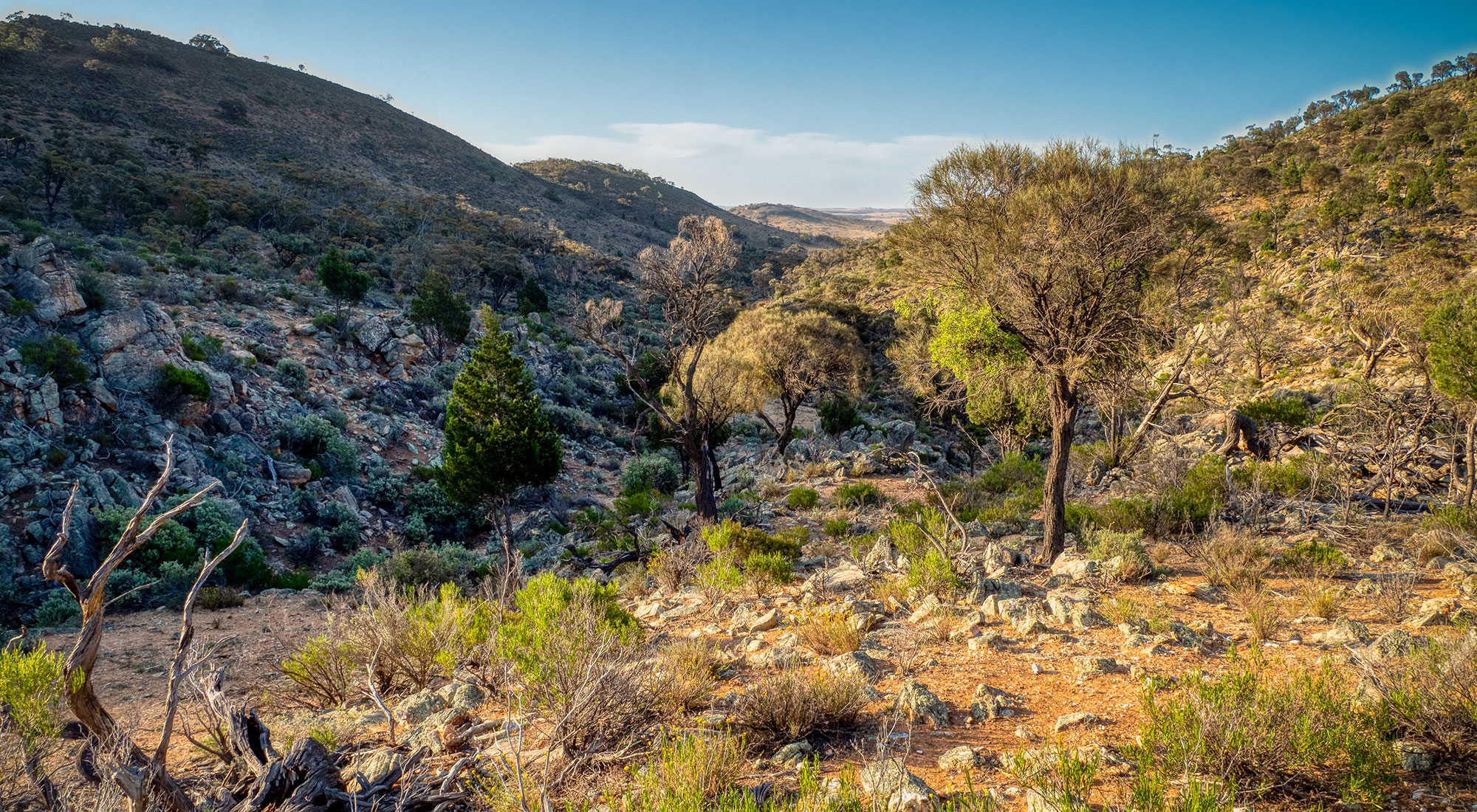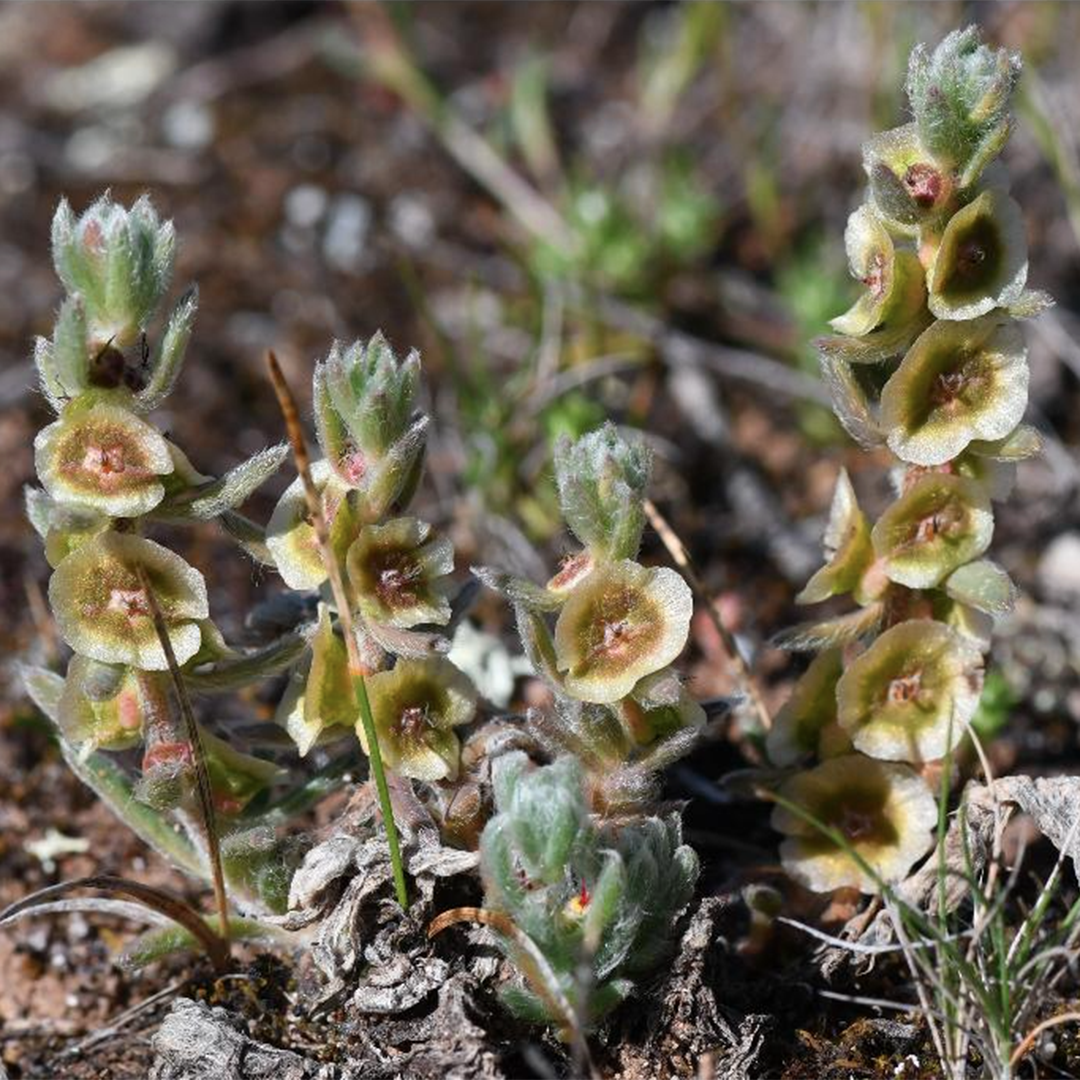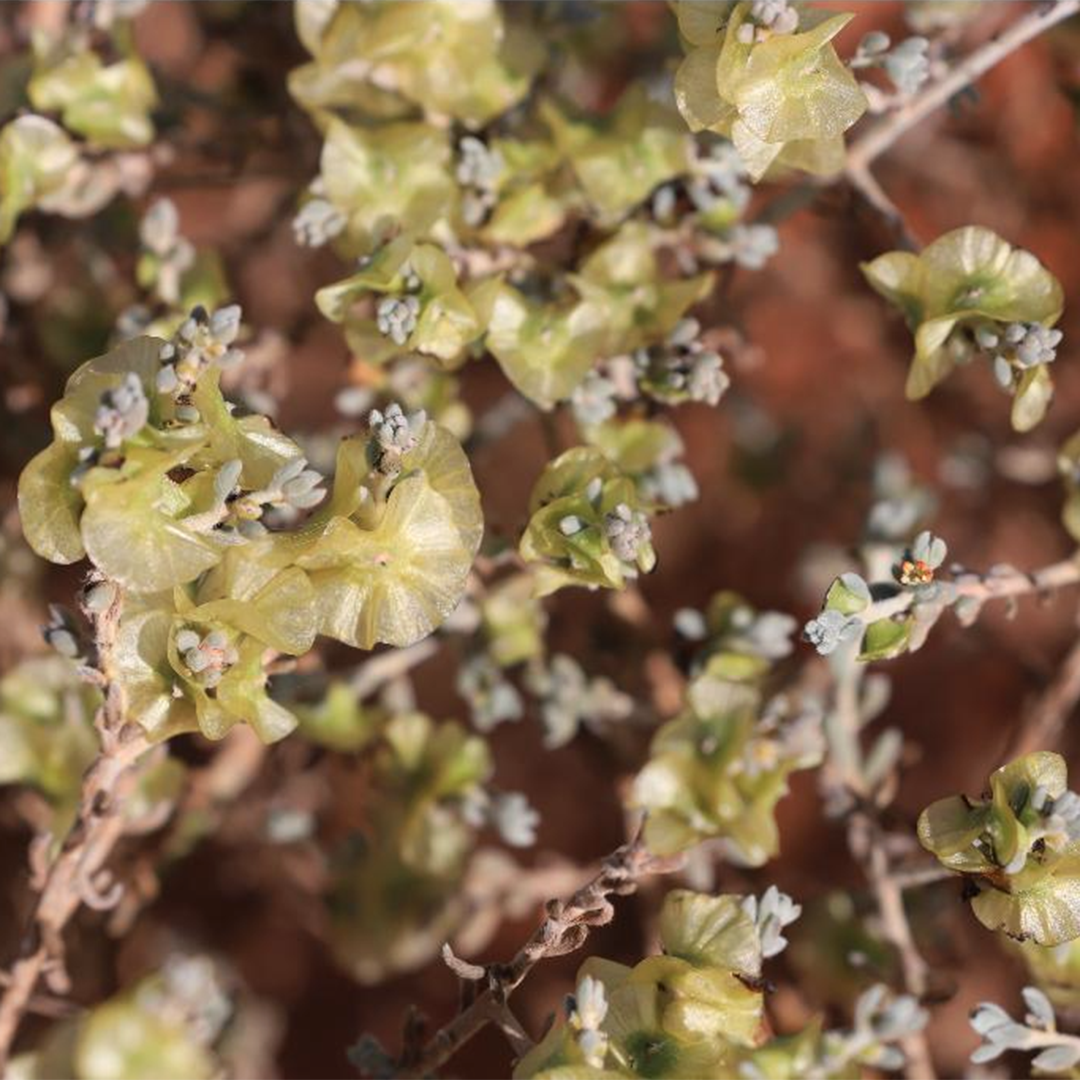We’ve hit the ground running with our most recent nature reserve, Mongolurring, a 1,200-hectare area of mallee woodland east of Mount Bryan.
Acquired in June 2024 through the generous donation of a benefactor, initial information indicates the presence of EPBC-listed Southern Whiteface and Diamond Firetail and SA State-listed White-winged Chough.
The Science and Knowledge team will undertake initial baseline biological surveys to assist with developing conservation management recommendations, commencing with a preliminary vegetation survey.
The two-day survey, conducted by volunteers Sonia and Tim Croft in early October, assessed vegetation types and habitats across the western half of the nature reserve.

 The survey identified the following key vegetation types:
The survey identified the following key vegetation types:
- Mallee woodland
- Low woodland
- Low shrubland
- Senna species shrubland and
- Grassland
Numerous small creeks also traverse the nature reserve, with vegetation floristically the same as adjoining vegetation. This diversity of habitat is not uncommon over large areas and supports a range of flora and fauna.
The survey also found two SA State-listed* plants onsite:
- Bottle Bluebush Maireana excavata (Vulnerable), pictured top right
 Rohrlach’s Bluebush Maireana rohrlachii (Rare), pictured bottom right
Rohrlach’s Bluebush Maireana rohrlachii (Rare), pictured bottom right
*(National Parks and Wildlife Act 1972, Schedules)
In addition to the native flora, there was evidence of invasive weeds, including African Boxthorn (Lycium ferocissum) and a localised patch of Horehound (Marrubium vulgare).
As with many of our nature reserves, feral species will be a key management issue. While the area has not had farm stock run on it, goats are present, and foxes and deer were sighted.
While further survey work will occur, these initial findings form a strong base for initial management plans that will focus on controlling feral species and tackling invasive weeds.
Many thanks to volunteers Sonia and Tim for their efforts, and we look forward to sharing further updates on the findings and progress at Mongolurring Nature Reserve.
Photo credits:
- Mongolurring landscape photos by Bill Doyle
- Bottle Bluebush via Atlas of Living Australia by gmgoods
- Rohrlach's Bluebush via Atlas of Living Australia by Arthur Chapman